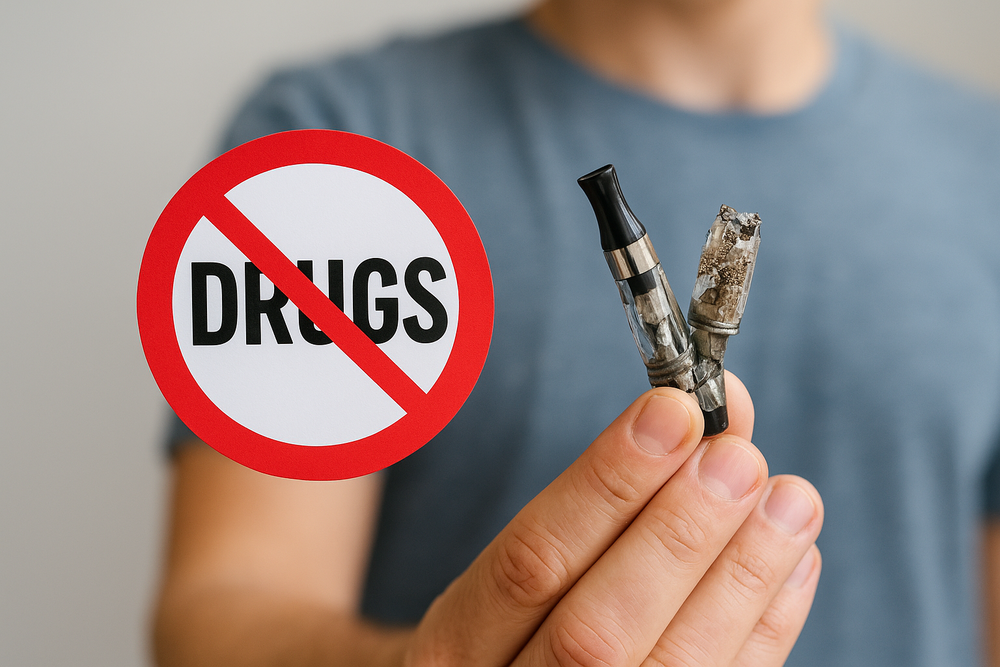During the recent Tribal Education Professional Development Day, several of our Sacaton teachers attended an overview of the “Catch My Breath” program—an evidence-based anti-drug and anti-vaping curriculum designed to educate and empower students to make healthy choices. Our educators were highly impressed by the program’s interactive approach, strong emphasis on prevention, and its alignment with our district’s commitment to student health and well-being.
Following that event, I reached out to Bryan Bennett, Prevention Specialist with Gila River Behavioral Health, to explore bringing Catch My Breath to Sacaton Schools. Mr. Bennett eagerly agreed to partner with us, and we are pleased to announce that the program will be presented to our staff and students in the coming days and weeks.
In addition to classroom and staff sessions, parent, guardian, and community presentations will also be offered to extend this important message beyond the school setting. Together, we are taking proactive steps to promote awareness, prevention, and resilience—ensuring our students can truly “catch their breath” and thrive in a safe, healthy environment.
Purpose: Equip students and staff with knowledge, skills, and confidence to resist vaping and other substance-use pressures while strengthening emotional regulation and peer support.
What the Program Offers
Education about vaping and drug risks: Students will learn about the health consequences of e-cigarette use, nicotine addiction, and substance misuse—with clear, age-appropriate language tailored for school-aged children.
Peer pressure & refusal skills: The curriculum includes interactive activities and discussions in which students practice how to say no, how to support one another, and how to make positive choices when they or a friend may be offered a vape, drug, or alcohol.
Emotion-regulation and breathing skills: In line with “Catch Your Breath,” the program teaches simple breathing and coping techniques for managing stress, anxiety, or the desire to conform. These tools help students pause, think, and act rather than react.
Cultural relevance and community connection: Delivered by Gila River Community Behavioral Health in collaboration with our district, the program incorporates local culture, values, and community supports—helping students connect the anti-vaping/anti-drug message to everyday life, family, and tradition.
Strengthening the “upstander” mindset: The curriculum emphasizes being an upstander—not just for oneself, but for peers. Students learn how they can help a friend stay safe, ask for help, and resist negative influences together.
Why It Matters at Our District
Early vaping and substance experimentation have become a growing concern nationally and within many communities. Providing prevention education at the elementary level builds stronger foundations.
Teaching refusal skills and emotional regulation helps students make healthy choices, reduces risk of later substance use, and supports a safer, healthier school environment.
When students are equipped with both knowledge and tools—like how to calm down, say “no,” or support a friend—classrooms become more focused, respectful, and inclusive, enhancing learning for everyone.
The program aligns with our district’s commitment to well-being by reinforcing that every student has the right—and the power—to make safe, respectful choices and lift one another up.
What to Expect
Duration & Format: Over one or more sessions in school (for example, 30-45 minutes each), delivered by trained facilitators from Gila River Community Behavioral Health in partnership with school staff.
Interactive Learning: Students participate in group discussions, scenario-based role plays (e.g., “What would you say if someone offered you a vape?”), breathing/coping exercises, and peer-helping planning.
Take-Home Connection: Students will receive a simple one-page hand‐out or guide to share with families—so the learning continues at home: “Here’s how we catch our breath, say no, and support one another.”
Safe and Supportive Environment: The facilitators emphasize confidentiality, respect, and the idea that asking for help is a sign of strength—not weakness. Students will be asked to identify trusted adults and peers who can support them.
Call to Action
We will present this program to the students and invite all students to engage with this program openly, to try the skills (especially the breathing and refusal tools), and to look out not only for themselves—but for each other. Together, we will build a school community where saying “no” to vaping, drugs or unsafe choices is supported, and where kindness, courage, and self-respect are shared by every student.

